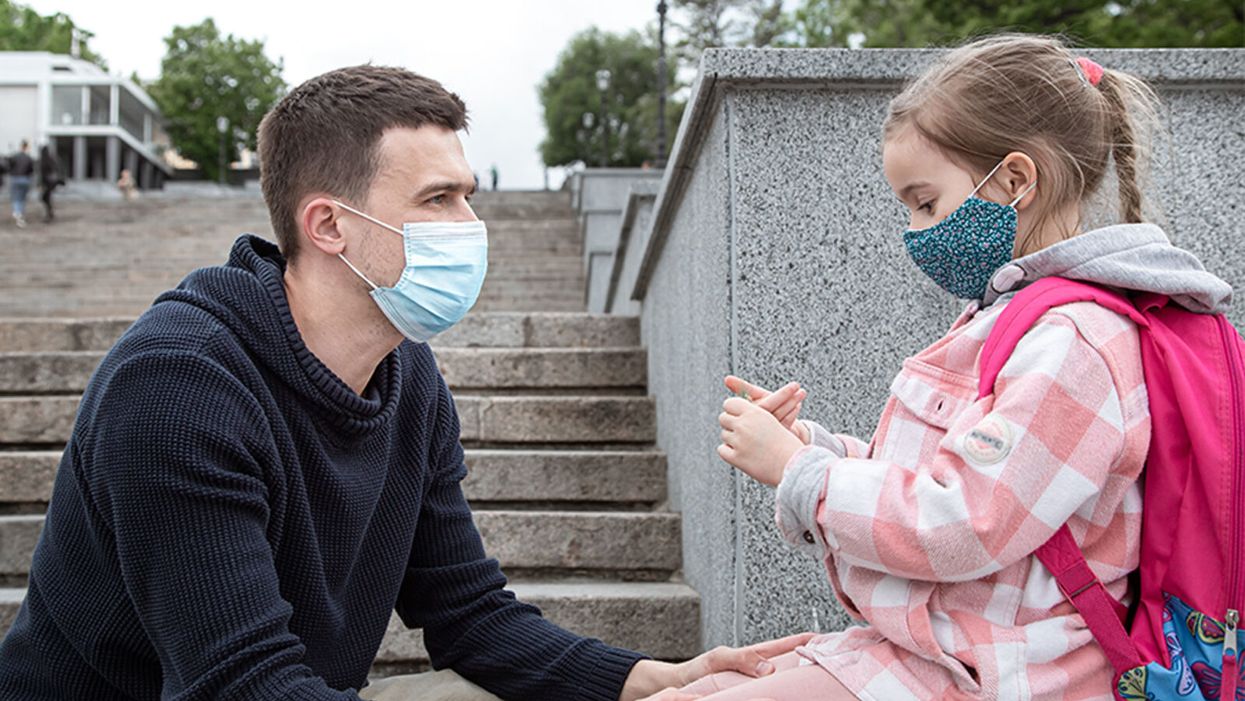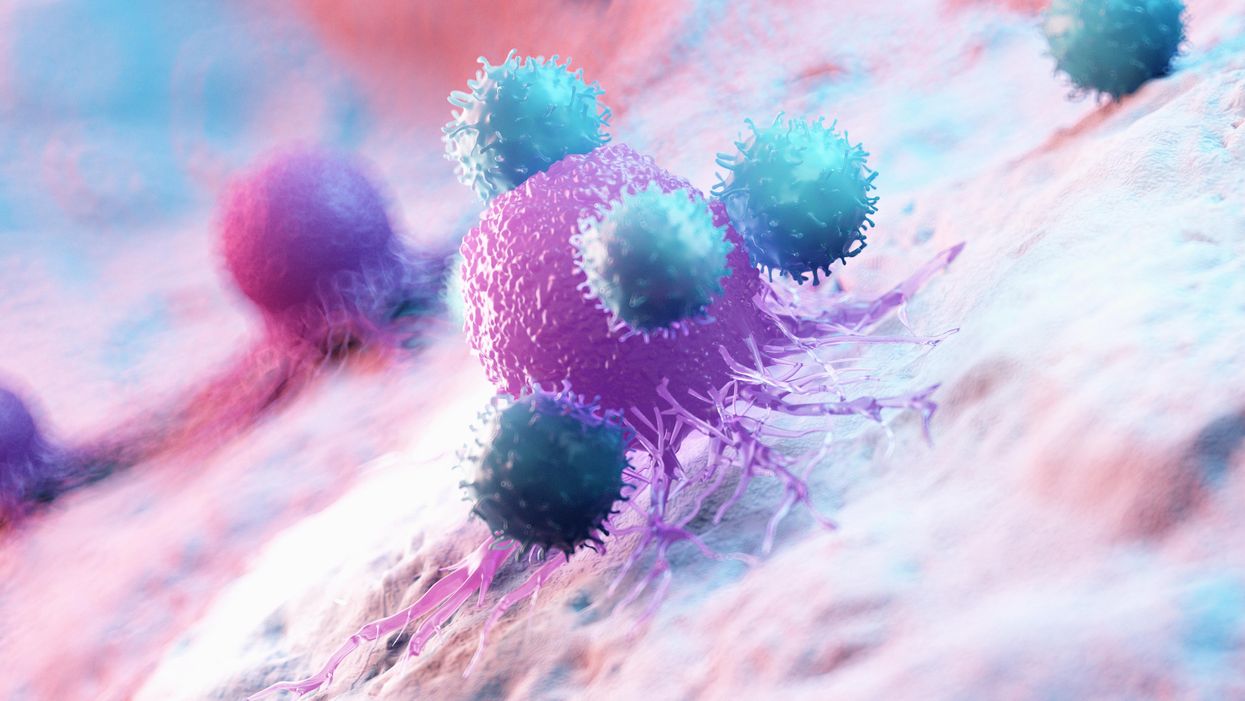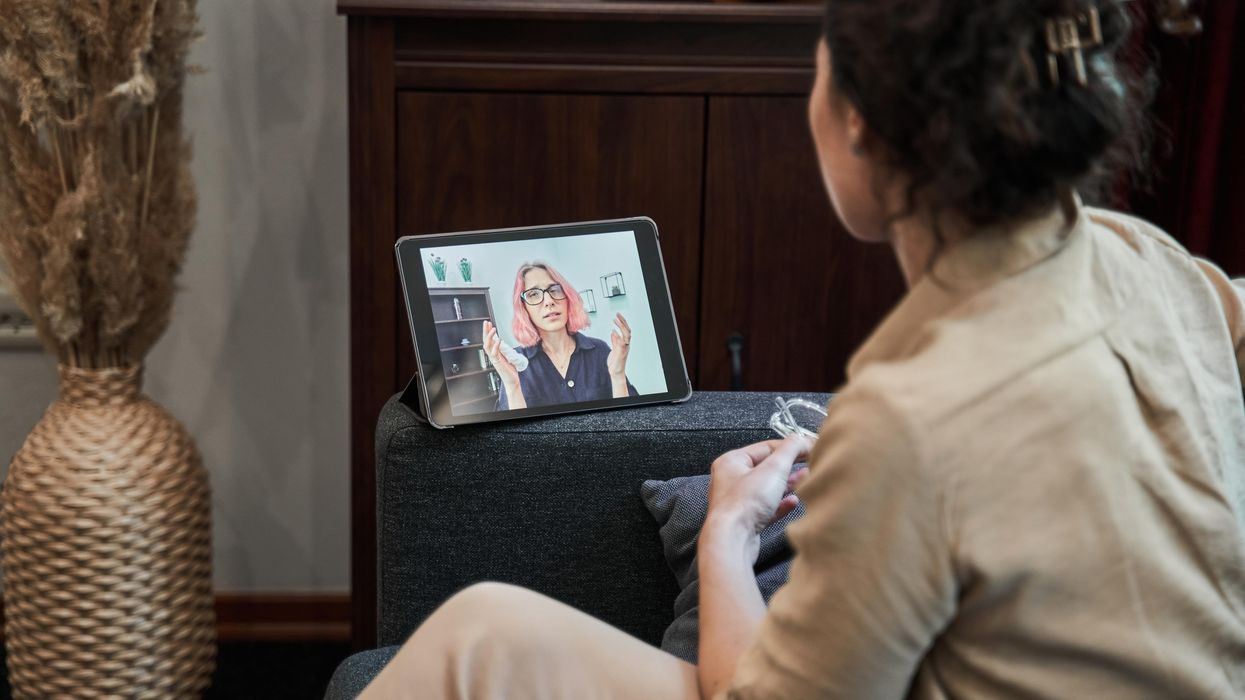5 Key Questions to Consider Before Sending Your Child Back to School

Consider community, school district policies, family health, risks/benefits, and necessity of schools before making the difficult decision.
[Editor's Note: This essay is in response to our current Big Question, which we posed to several experts: "Under what circumstances would you send a child back to school, given that the virus is not going away anytime soon?"]
It is August. The start date of school is quickly approaching. Decisions must be made about whether to send our children back. As a physician, a public health researcher, and the mother of two school-aged children, I have few clear answers.
To add insult to injury, a spate of recent new data suggests that - as many of us suspected all along - kids are susceptible to COVID-19, they transmit COVID-19, and they can get really sick from COVID-19.
Let me start with the obvious. My kids, and all kids, deserve a safe, in-person school year. We know the data on the adverse effects of school closure on kids, particularly for those who are already vulnerable. I also know, on a personal level, that distance learning is no substitute for in-person schooling. Homeschooling may be great for those with the privilege to do it, but I - like many Americans - am unable to quit my job, and children need more than a screen to learn.
Moreover, safe school reopening should not be an impossible dream. I and many other physicians, teachers, and scientists have described the bare minimum that we need to safely reopen schools: a stable, low rate of COVID-19 in the community; funding and mandates for basic public health precautions (like universal masking and small, stable classes) in the schools; and easy access to testing for kids and teachers. This has been achieved, successfully, in other countries.
Unfortunately, the United States has squandered its opportunity to do right by families. Across our country, rates of COVID-19 are rising. Few states have been able to sustain a test positivity rate of less than 5 percent - the maximum that most of us, in the public health world, would tolerate. Delays in testing are rampant. Systemic under-funding of public schools means that many schools simply can't afford to put basic public health measures in place. Worst, science denialism (and the spread of quack conspiracy theories online) means that many communities are fighting even the most basic of safety precautions.
To add insult to injury, a spate of recent new data suggests that - as many of us suspected all along - kids are susceptible to COVID-19, they transmit COVID-19, and they can get really sick from COVID-19. This data increases the risk calculus. Our kids are not immune, and neither are we.
Given that the necessary societal interventions simply have not happened, most American families are therefore left making an individual choice: do I send my kid to school? Or not? There are five key questions for parents to ponder when making the difficult choice about what to do.
First, we must look at our community. Knowing that testing is difficult to obtain, a true estimate of community prevalence of COVID-19 is nearly impossible. But with a test positivity rate of more than 5 percent, it's safe to assume that in a school of 500 people, at least 1 will be positive for COVID-19. That is too high for safety. Whether or not the local government does the right thing, I would not send my child to in-person school if my community had these high rates of test positivity.
Second, we must look at our school district's policies. Will the school mandate masks? Are they cohorting students and teachers in small, stable groups? Do they have contact tracing and isolation policies in place for when a student or teacher inevitably tests positive? Do they have procedures to protect vulnerable teachers and staff? If not, I would not send my child to school. If the district is doing all of the above, I would consider it.
Third, we must look at the health profile of our own kids and families. If my child had chronic medical issues, or if I lived with my elderly parents or were myself at high risk of severe disease, I would not send my child to in-person school.
It is therefore unlikely that schools anywhere in the U.S. will be open by October.
Fourth, we must do the difficult, ethical weighing of the non-zero risk of infection (even in the safest communities) with the needs of our children. Even in low-prevalence states, there will be infections in the school setting. That said, the small risk of a severe infection may be outweighed by the social, emotional, and financial risk of keeping a child home. This decision must be made on a family-by-family basis. I know my answer; but I cannot provide this answer for others.
Finally, we must call attention to the fact that many kids and families have no options. There are far too many American children who literally depend on their school system for physical, nutritional, emotional, and academic safety. There are too many parents who have no way to earn an income and keep their kids safe without in-person learning. If anyone deserves to be prioritized for in-person schooling, it should be them. (And yes, we should also work to fix the social safety net that leaves these children high and dry.)
As I write this on August 2nd, 2020, I am planning to send my two children back to our public schools for in-person education. We have low rates of infection in our community, we have masking and stable cohorts in place, and my family is relatively healthy. We also depend on the schools to keep my children safe and engaged while I'm working in the ER! I will not hesitate, however, to pull my children out of school should any of these considerations change, if local test positivity rates go up, or if my children report that masking is not the norm in the classroom.
And sadly, I expect that this discussion will soon be a moot point. We continue to fail as a nation at basic public health policies. It is therefore unlikely that schools anywhere in the U.S. will be open by October. Our country has not shown the willpower to control the virus, leaving us all with, literally, no choice to make.
[Editor's Note: Here's the other essay in the Back to School series: Masks and Distancing Won't Be Enough to Prevent School Outbreaks, Latest Science Suggests.]
The Friday Five: Artificial DNA Could Give Cancer the Hook
In this week's Friday Five, artificial DNA could give cancer the hook. Plus, research suggests that this daily practice can improve relationships, social media could be good for finding factual information, injecting a gel may speed up recovery from injuries, and a blood pressure medicine is promising for a long healthy life.
The Friday Five covers five stories in research that you may have missed this week. There are plenty of controversies and troubling ethical issues in science – and we get into many of them in our online magazine – but this news roundup focuses on scientific creativity and progress to give you a therapeutic dose of inspiration headed into the weekend.
Listen on Apple | Listen on Spotify | Listen on Stitcher | Listen on Amazon | Listen on Google
Here are the promising studies covered in this week's Friday Five:
- Artificial DNA gives cancer the hook
- This daily practice could improve relationships
- Can social media handle the truth?
- Injecting a gel could speed up recovery
- A blood pressure medicine for a long healthy life
9 Tips for Online Mental Health Therapy
Research shows that, for most patients, online therapy offers the same benefits as in-person therapy, yet many people still resist it. A behavioral scientist explains how you can use it to improve mental health.
Telehealth offers a vast improvement in access and convenience to all sorts of medical services, and online therapy for mental health is one of the most promising case studies for telehealth. With many online therapy options available, you can choose whatever works best for you. Yet many people are hesitant about using online therapy. Even if they do give it a try, they often don’t know how to make the most effective use of this treatment modality.
Why do so many feel uncertain about online therapy? A major reason stems from its novelty. Humans are creatures of habit, prone to falling for what behavioral scientists like myself call the status quo bias, a predisposition to stick to traditional practices and behaviors. Many people reject innovative solutions even when they would be helpful. Thus, while teletherapy was available long before the pandemic, and might have fit the needs of many potential clients, relatively few took advantage of this option.
Even when we do try new methodologies, we often don’t do so effectively, because we cling to the same approaches that worked in previous situations. Scientists call this behavior functional fixedness. It’s kind of like the saying about the hammer-nail syndrome: “when you have a hammer, everything looks like a nail.”
These two mental blindspots, the status quo bias and functional fixedness, impact decision making in many areas of life. Fortunately, recent research has shown effective and pragmatic strategies to defeat these dangerous errors in judgment. The nine tips below will help you make the best decisions to get effective online therapy, based on the latest research.
Trust the science of online therapy
Extensive research shows that, for most patients, online therapy offers the same benefits as in-person therapy.
For instance, a 2014 study in the Journal of Affective Disorders reported that online treatment proved just as effective as face-to-face treatment for depression. A 2018 study, published in Journal of Psychological Disorders, found that online cognitive behavioral therapy, or CBT, was just as effective as face-to-face treatment for major depression, panic disorder, social anxiety disorder, and generalized anxiety disorder. And a 2014 study in Behaviour Research and Therapy discovered that online CBT proved effective in treating anxiety disorders, and helped lower costs of treatment.
During the forced teletherapy of COVID, therapists worried that those with serious mental health conditions would be less likely to convert to teletherapy. Yet research published in Counselling Psychology Quarterly has helped to alleviate that concern. It found that those with schizophrenia, bipolar disorder, severe depression, PTSD, and even suicidality converted to teletherapy at about the same rate as those with less severe mental health challenges.
Yet teletherapy may not be for everyone. For example, adolescents had the most varied response to teletherapy, according to a 2020 study in Family Process. Some adapted quickly and easily, while others found it awkward and anxiety-inducing. On the whole, children with trauma respond worse to online therapy, per a 2020 study in Child Abuse & Neglect. The treatment of mental health issues can sometimes require in-person interactions, such as the use of eye movement desensitization and reprocessing to treat post-traumatic stress disorder. And according to a 2020 study from the Journal of Humanistic Psychology, online therapy may not be as effective for those suffering from loneliness.
Leverage the strengths of online therapy
Online therapy is much more accessible than in-person therapy for those with a decent internet connection, webcam, mic, and digital skills. You don’t have to commute to your therapist’s office, wasting money and time. You can take much less medical leave from work, saving you money and hassle with your boss. If you live in a sparsely populated area, online therapy could allow you to access many specialized kinds of therapy that isn’t accessible locally.
Online options are much quicker compared to the long waiting lines for in-person therapy. You also have much more convenient scheduling options. And you won’t have to worry about running into someone you know in the waiting room. Online therapy is easier to conceal from others and reduces stigma. Many patients may feel more comfortable and open to sharing in the privacy and comfort of their own home.
You can use a variety of communication tools suited to your needs at any given time. Video can be used to start a relationship with a therapist and have more intense and nuanced discussions, but can be draining, especially for those with social anxiety. Voice-only may work well for less intense discussions. Email offers a useful option for long-form, well-thought-out messages. Texting is useful for quick, real-time questions, answers, and reinforcement.
Plus, online therapy is often cheaper than in-person therapy. In the midst of COVID, many insurance providers have decided to cover online therapy.
Address the weaknesses
One weakness is the requirement for appropriate technology and skills to engage in online therapy. Another is the difficulty of forming a close therapeutic relationship with your therapist. You won’t be able to communicate non-verbals as fully and the therapist will not be able to read you as well, requiring you to be more deliberate in how you express yourself.
Another important issue is that online therapy is subject to less government oversight compared to the in-person approach, which is regulated in each state, providing a baseline of quality control. As a result, you have to do more research on the providers that offer online therapy to make sure they’re reputable, use only licensed therapists, and have a clear and transparent pay structure.
Be intentional about advocating for yourself
Figure out what kind of goals you want to achieve. Consider how, within the context of your goals, you can leverage the benefits of online therapy while addressing the weaknesses. Write down and commit to achieving your goals. Remember, you need to be your own advocate, especially in the less regulated space of online therapy, so focus on being proactive in achieving your goals.
Develop your Hero’s Journey
Because online therapy can occur at various times of day through videos calls, emails and text, it might feel more open-ended and less organized, which can have advantages and disadvantages. One way you can give it more structure is to ground these interactions in the story of your self-improvement. Our minds perceive the world through narratives. Create a story of how you’ll get from where you are to where you want to go, meaning your goals.
A good template to use is the Hero’s Journey. Start the narrative with where you are, and what caused you to seek therapy. Write about the obstacles you will need to overcome, and the kind of help from a therapist that you’ll need in the process. Then, describe the final end state: how will you be better off after this journey, including what you will have learned.
Especially in online therapy, you need to be on top of things. Too many people let the therapist manage the treatment plan. As you pursue your hero’s journey, another way to organize for success is to take notes on your progress, and reevaluate how you’re doing every month with your therapist.
Identify your ideal mentor
Since it’s more difficult to be confident about the quality of service providers in an online setting, you should identify in advance the traits of your desired therapist. Every Hero’s Journey involves a mentor figure who guides the protagonist through this journey. So who’s your ideal mentor? Write out their top 10 characteristics, from most to least important.
For example, you might want someone who is:
- Empathetic
- Caring
- Good listener
- Logical
- Direct
- Questioning
- Non-judgmental
- Organized
- Curious
- Flexible
That’s my list. Depending on what challenge you’re facing and your personality and preferences, you should make your own. Then, when you are matched with a therapist, evaluate how well they fit your ideal list.
Fail fast
When you first match with a therapist, try to fail fast. That means, instead of focusing on getting treatment, focus on figuring out if the therapist is a good match based on the traits you identified above. That will enable you to move on quickly if they’re not, and it’s very much worth it to figure that out early.
Tell them your goals, your story, and your vision of your ideal mentor. Ask them whether they think they are a match, and what kind of a treatment plan they would suggest based on the information you provided. And observe them yourself in your initial interactions, focusing on whether they’re a good match. Often, you’ll find that your initial vision of your ideal mentor is incomplete, and you’ll learn through doing therapy what kind of a therapist is the best fit for you.
Choose a small but meaningful subgoal to work on first
This small subgoal should be sufficient to be meaningful and impactful for improving your mental health, but not a big stretch for you to achieve. This subgoal should be a tool for you to use to evaluate whether the therapist is indeed a good fit for you. It will also help you evaluate whether the treatment plan makes sense, or whether it needs to be revised.
Know when to wrap things up
As you approach the end of your planned work and you see you’re reaching your goals, talk to the therapist about how to wrap up rather than letting things drag on for too long. You don’t want to become dependent on therapy: it’s meant to be a temporary intervention. Some less scrupulous therapists will insist that therapy should never end and we should all stay in therapy forever, and you want to avoid falling for this line. When you reach your goals, end your therapy, unless you discover a serious new reason to continue it. Still, it may be wise to set up occasional check-ins once every three to six months to make sure you’re staying on the right track.

